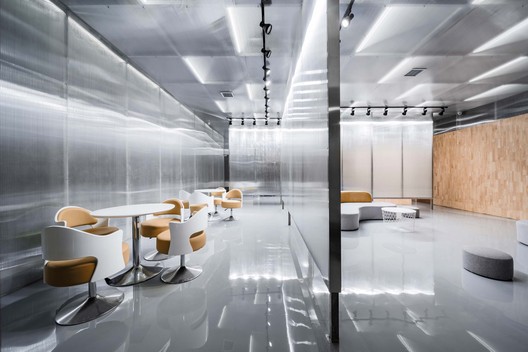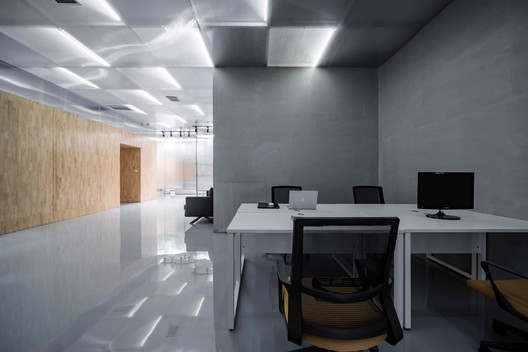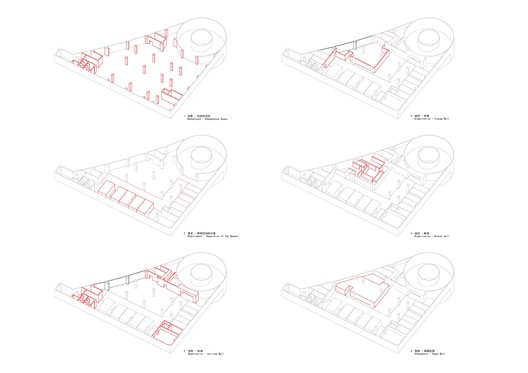
-
Architects: Wall Architects of XAUAT
- Area: 1420 m²
- Year: 2019
-
Photographs:TrimontImage
-
Lead Architects: Maozhen Wang, Rui Wu, Shaochong Li
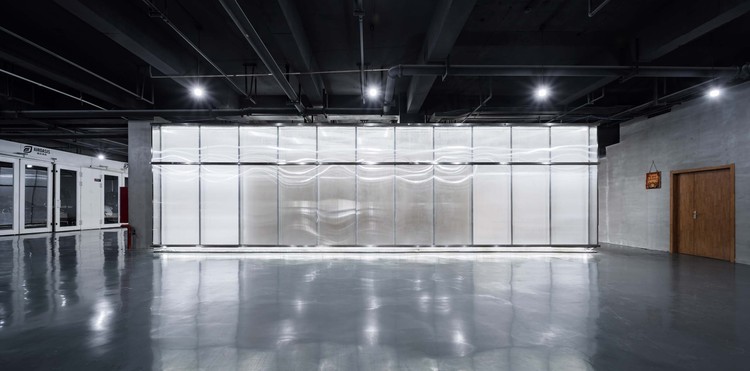
Background - Homogeneous Space
This project is located in Xi'an's emerging automotive service market, "Xi'an Third Bridge Auto Parts Happy Port". The object for transformation is a 1420 square meters, reinforced concrete framed two-story building near the entrance of the market.

Requirement - Separation of Two Spaces
The owner of the building is requesting a separation of space between the automotive special effect paint spraying area and a public display/administrative area. The process for automobile special effect paint spraying composes of five parts: vehicle detection area, sheet metal area, spraying area, polishing area, and quality inspection area. There is also a space where vehicles can rotate between these five areas. In addition, the owner needs a public space which can be used as an automotive cultural display, an area for negotiations and training, and two independent office spaces.

Opportunity - Inclined Wall
The concept for the design began with an existing "inclined wall" on the east side of the original space: when the original space is occupied by the automobile special effect paint spraying area, the remaining space to be designed is constrained and limited to the area between the entrance and the “inclined wall”. To transcend this limitation, which is also the biggest characteristic of the space subjected to this design, we began to strategize and develop different possibilities for the wall used to separate the areas discussed above.

Organization - Zigzag Wall and Broken wall
In contrast to the "inclined wall", we also incorporated the existing wall connecting the south and northeast corners to create a continuous "zigzag wall" to clearly showcase the interior and exterior of the space (interior administrative space and automotive displays and exterior automotive special effect painting area). This "zigzag wall" provides an interesting irregular space for the interior and an L-shaped efficient workstation area for the exterior.
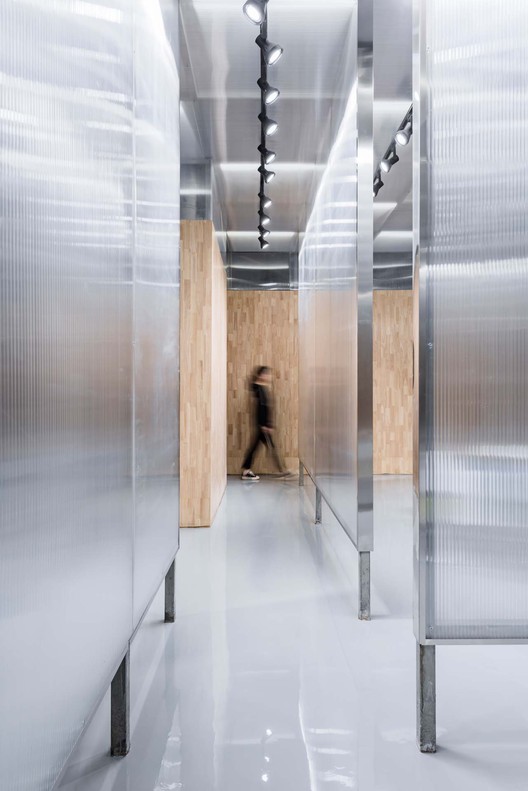
The interior space can be used for multiple functions. There is no need to separate the space for these functions. The emergence of "broken walls" naturally divide the space into functional areas. This will allow for those using the space to congregate within specific functional areas and also maintain a certain degree of privacy.

Atmosphere - Vague Wall
Conventional "walls" are used for the purpose of clearly dividing a space, thus creating interior and exterior areas, which gives people an absolute sense of isolation. The connection between the areas is achieved through windows and doors. The "wall" of Early Mies-style shattered the concept of "interior and exterior distinction" and started the discussion the issues of "access and separation". The appearance of glass breaks the visual boundary of the inside and the outside, but also allows for one to see through the space. For this reason, we used PP Sheet as an impermeable translucent material to construct walls in order to present a new sense of spatial experience. Compared with frosted glass, sunshine panels have a more rippled texture on the surface, which can uniquely and dramatically refract light and shadow.

Articulation - Wall and Roof; Wall and Ground
The height of the original space is very high. We added a layer to the roofing with the sunshine panels, leaving a space that can be used to house equipment and hide the lamps in accordance with the modulus. The effects of the refracted light as discussed above are further showcased when the light from the lamp enters the space below through the sunshine panels.
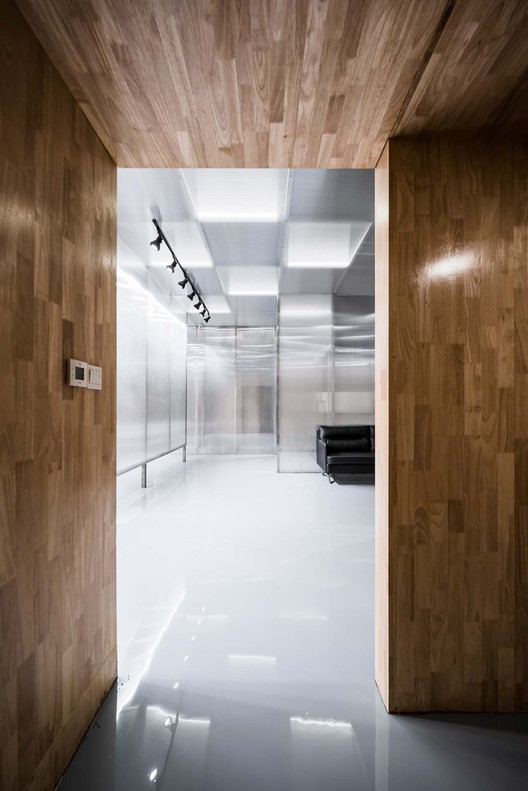
Sunshine panels are lightweight materials, which cannot bear much weight. Thus, a metal lattice is used to stabilize the panels. The lightness of the sunshine panels is juxtaposed against the sturdiness of the metal lattice. The ground acts as a mirror, reflecting the lightness of the walls and the space.










